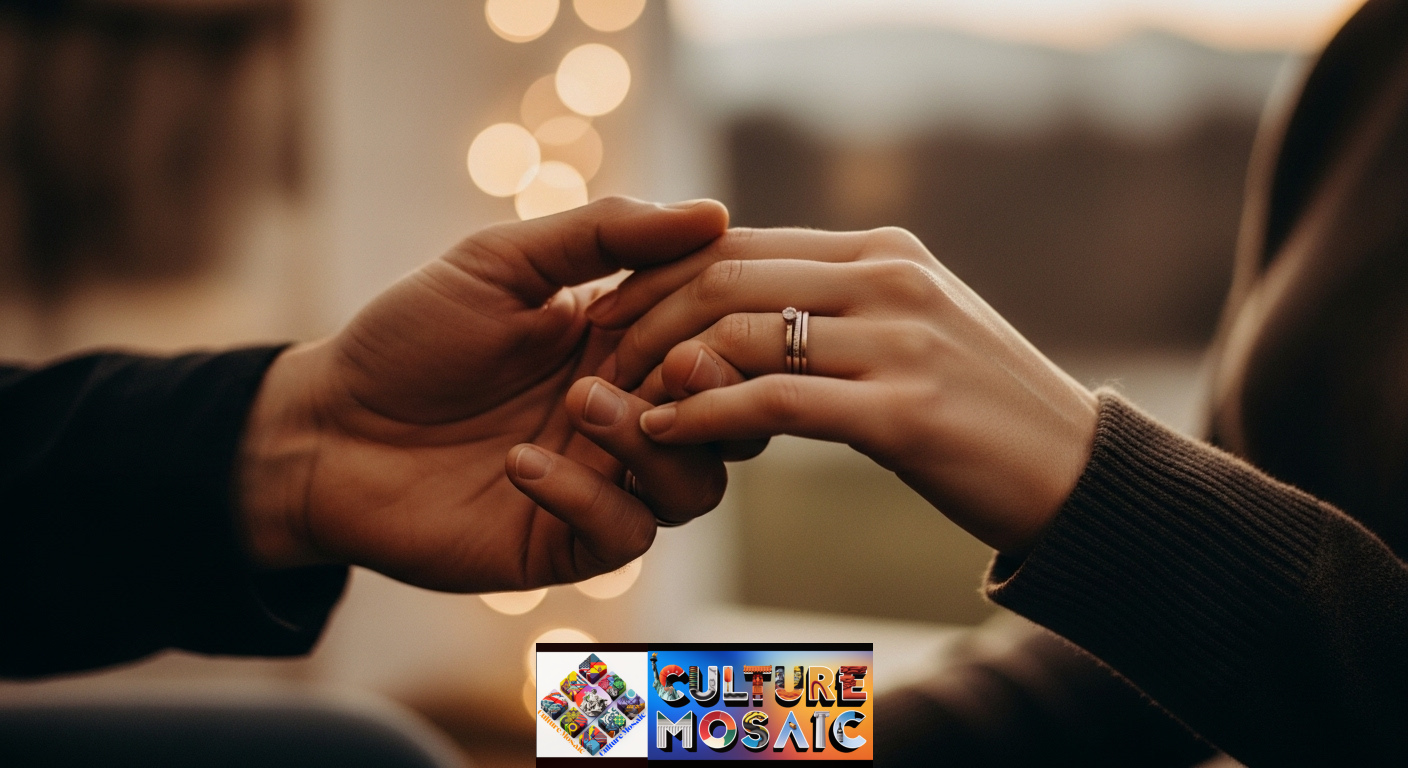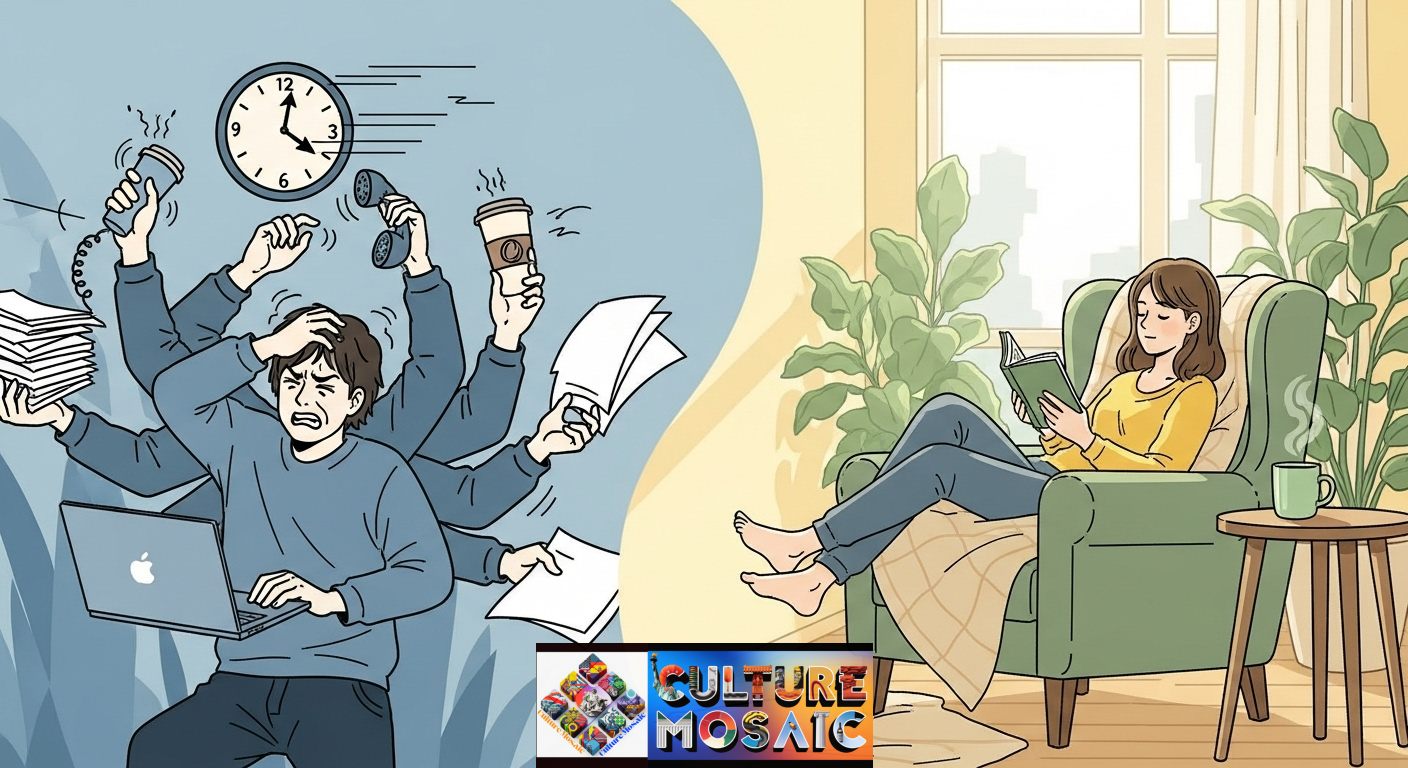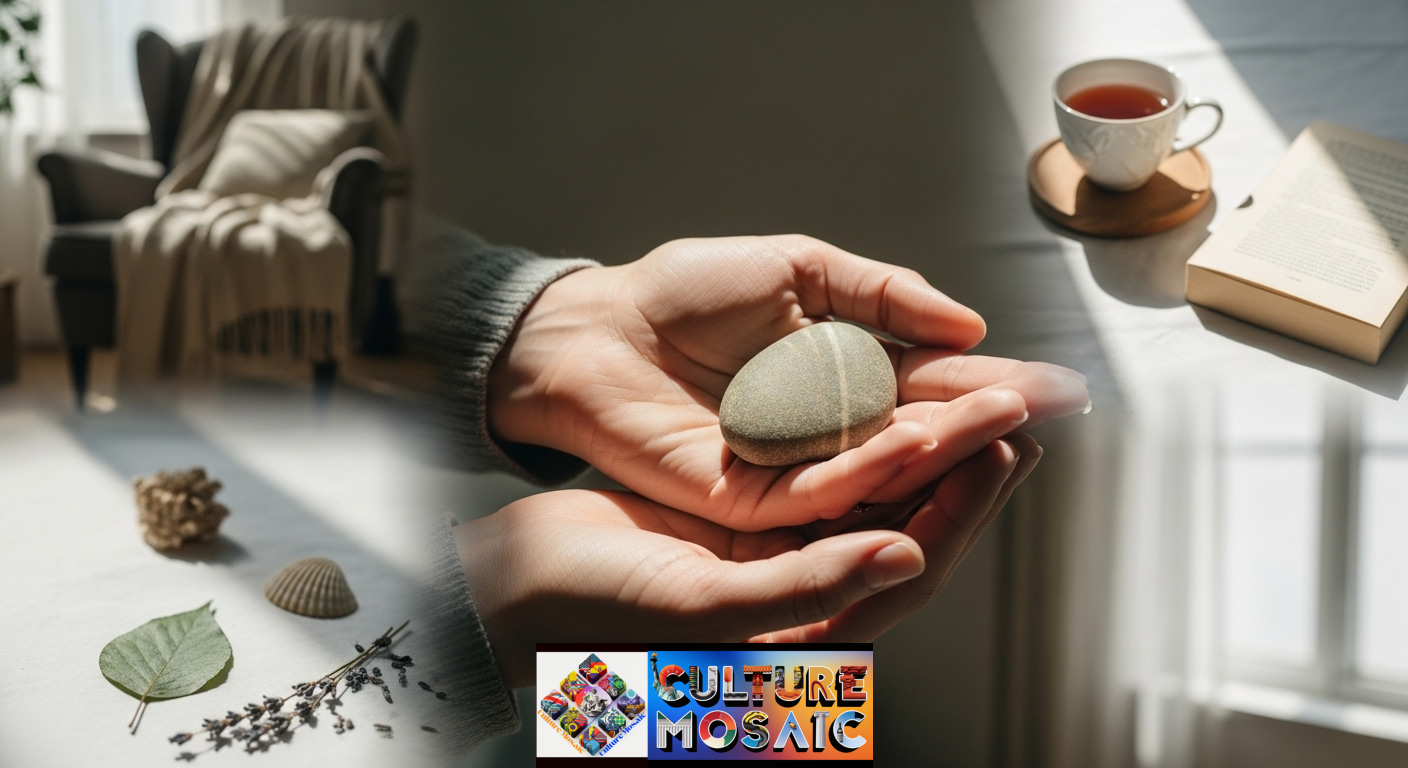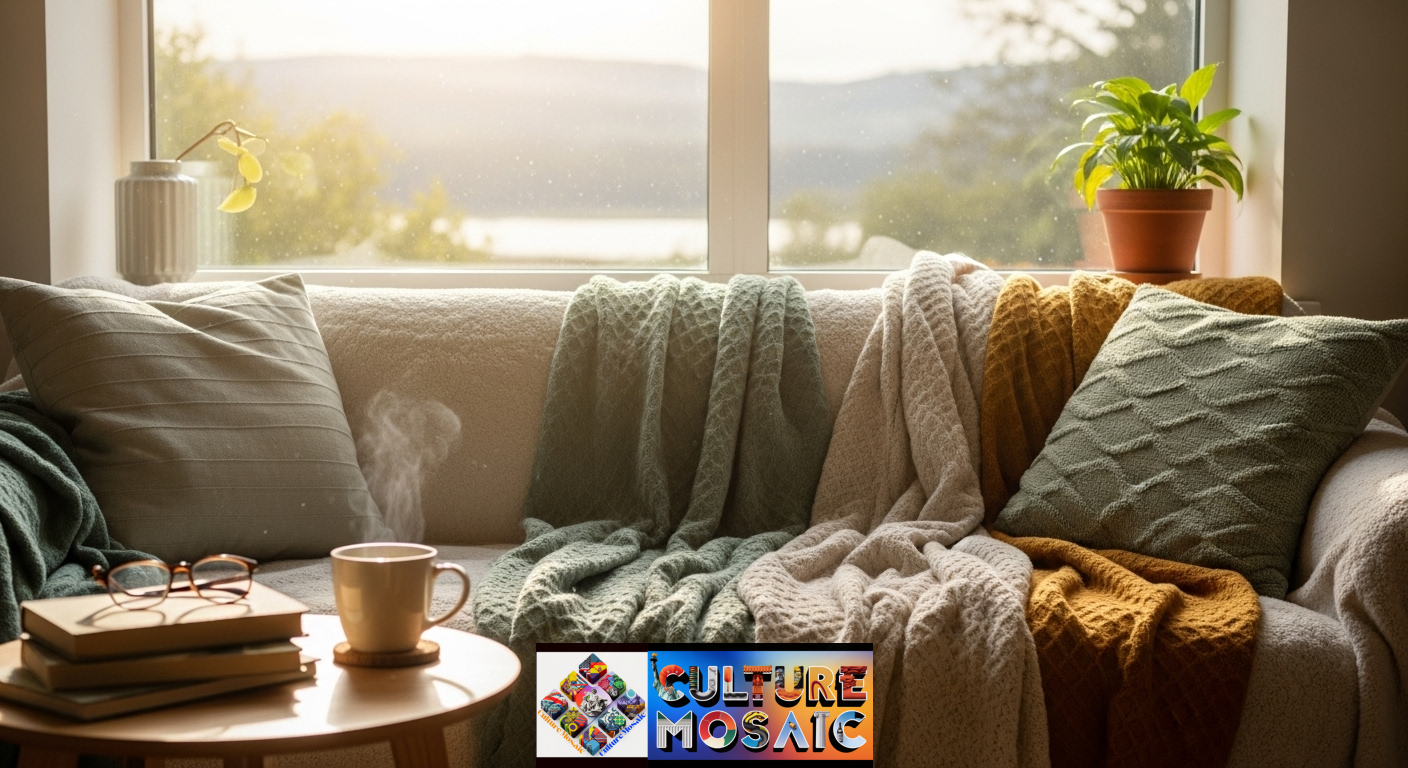The American Dream is getting a makeover, and it’s softer than ever before. Across the United States, a cultural revolution is quietly unfolding—one that prioritizes peace over productivity, boundaries over burnout, and intentional living over endless hustle. Welcome to the soft life movement, where success is measured not by your side hustles but by your mental health, authentic relationships, and genuine well-being.
If you’ve noticed your social media feeds filling with cozy aesthetics, gentle affirmations, and people unapologetically setting boundaries at work, you’re witnessing this shift in real time. The soft life isn’t about laziness or lack of ambition—it’s a deliberate recalibration of what truly matters in an era of economic uncertainty, social media fatigue, and collective burnout.
Understanding the Soft Life: More Than Just a Trend

The soft life is a lifestyle philosophy centered on ease, joy, and intentional choices that prioritize emotional and mental well-being. It’s about creating a life that feels good from the inside out, rather than one that simply looks impressive from the outside in.
At its core, embracing a soft life means:
- Rejecting hustle culture’s glorification of overwork and exhaustion
- Setting firm boundaries in professional and personal relationships
- Choosing quality over quantity in consumption and experiences
- Prioritizing rest, relaxation, and activities that genuinely replenish your energy
- Creating spaces and routines that feel peaceful and nurturing
This movement originated primarily within Black women’s online communities, particularly on platforms like TikTok and Instagram, where creators began sharing their journeys toward prioritizing pleasure, rest, and receiving rather than constantly giving and grinding. The philosophy has since resonated across demographics, particularly with Gen Z and younger Millennials who watched their parents sacrifice well-being for corporate loyalty that was never reciprocated.
Soft Life vs. Hustle Culture: The Great American Workplace Showdown

The contrast between the soft life and hustle culture couldn’t be starker, representing fundamentally different visions of success and fulfillment.
Hustle culture, which dominated the 2010s, celebrated the “rise and grind” mentality. Millennials were told that success required multiple side hustles, 60-hour work weeks, constant networking, and sacrificing sleep, relationships, and health for career advancement. The “girlboss” era glamorized exhaustion as a badge of honor, and phrases like “I’ll sleep when I’m dead” were worn as proud declarations rather than warning signs.
The soft life represents a direct rejection of this unsustainable model. Gen Z, having witnessed Millennials burn out en masse while facing layoffs, stagnant wages, and broken promises of meritocracy, chose a different path. They popularized terms like “quiet quitting” (setting boundaries and doing only what your job description requires) and “acting your wage” (refusing to overwork for employers who won’t fairly compensate you).
Research supports this generational shift. According to recent workplace studies, Gen Z employees prioritize work-life balance, mental health support, and company values over salary alone when choosing employers. They’re not afraid to leave jobs that demand too much of their personal lives, and they view rest as productive rather than lazy.
The soft life doesn’t mean abandoning ambition—it means redefining success on your own terms. It’s about building careers that support your life rather than lives that exist solely to support your career.
The Soft Launch: How Relationships Got Quieter and More Authentic

One of the most visible manifestations of soft life principles is the “soft launch” approach to relationships. This dating trend involves subtly hinting at a new relationship on social media—perhaps showing a hand holding yours or a blurred face in the background—without the full, face-forward relationship reveal that dominated social media in previous years.
The soft launch reflects deeper shifts in how younger Americans approach intimacy and privacy:
Protection from external pressure: By keeping relationships semi-private during early stages, couples protect their connection from the opinions, judgments, and unsolicited advice that social media inevitably brings. They’re building something real before inviting the world to weigh in.
Rejection of performative love: The soft launch stands in opposition to the highly curated, almost competitive relationship displays that characterized Instagram culture in the 2010s. It says, “this relationship is for us, not for likes and comments.”
Privacy as a luxury: In an age of oversharing, privacy has become precious. The soft launch acknowledges that not everything meaningful needs to be publicly documented and validated.
Authenticity over perfection: Soft launching allows relationships to exist in their messy, uncertain early stages without the pressure to present a polished, #CoupleGoals image to the world.
This approach to relationships perfectly embodies soft life values: protecting your peace, setting boundaries around what you share, and prioritizing the substance of your connections over their social media presentation.
Cozy-Core and Quiet Luxury: The Soft Life Aesthetic

The soft life isn’t just a mindset—it has a distinct aesthetic that’s taken over American design, fashion, and lifestyle spaces. This visual language includes several interconnected trends that all emphasize comfort, quality, and intentionality.
Cozy-core embraces warmth, comfort, and spaces that feel like gentle hugs. Think oversized knit blankets, ambient lighting, earth tones, and environments designed for genuine relaxation rather than Instagram perfection. The cozy-core aesthetic says your home should soothe your nervous system, not stress it out with maintenance and upkeep.
Quiet luxury represents a shift from logo-heavy, status-symbol fashion to understated, high-quality pieces that whisper rather than shout. It’s about knowing quality when you see it rather than needing brand names to signal wealth. This trend reflects the soft life value of discernment—choosing what genuinely serves you rather than what impresses others.
Slow living aesthetics emphasize natural materials, handmade items, and spaces that encourage you to slow down. This includes elements like pottery, linen textiles, houseplants, and analog activities like reading physical books or brewing tea with intention.
These aesthetic choices reflect deeper soft life values: mindful consumption over mindless shopping, quality over quantity, and creating environments that support well-being rather than just looking good in photos.
Why the Soft Life Resonates with Modern Americans

The soft life movement didn’t emerge in a vacuum—it’s a direct response to specific cultural, economic, and social conditions facing Americans today.
Economic reality check: Many Millennials hustled relentlessly and still couldn’t afford homes, retirement savings, or financial security. Gen Z watched this play out and thought, “If financial security isn’t guaranteed regardless of how hard I work, I might as well protect my mental health and enjoy the present.”
Pandemic perspective shift: COVID-19 forced many Americans to reconsider what actually matters. When the world stopped, people realized that constant busyness often masked deeper dissatisfaction. The soft life emerged as many questioned whether pre-pandemic norms were actually worth returning to.
Mental health awareness: Younger generations have destigmatized mental health conversations and recognize that anxiety, depression, and burnout aren’t badges of honor—they’re signs that something needs to change. The soft life provides a framework for that change.
Social media exhaustion: After years of performing perfect lives online, many Americans are tired. The soft life offers permission to be imperfect, private, and authentic rather than constantly curating content for external validation.
Systemic disillusionment: With broken social contracts around work loyalty, retirement security, and upward mobility, younger Americans are creating their own definitions of success that institutions can’t take away from them.
How to Embrace Your Own Soft Life Journey

Transitioning to a soft life doesn’t require quitting your job, moving to a cottage, or completely overhauling your existence overnight. It’s about incremental shifts toward greater ease, authenticity, and well-being.
Start with boundaries: Practice saying no to commitments that drain you without guilt. Your time and energy are finite resources that deserve protection. Set clear work hours and stick to them. Decline social invitations when you genuinely need rest.
Audit your consumption: Examine what you’re consuming—media, products, food, even relationships—and ask whether each thing adds value or just fills space. The soft life emphasizes quality and intentionality over quantity and distraction.
Create rest rituals: Build genuine rest into your routine, not as something you “earn” through productivity but as a non-negotiable part of well-being. This might mean morning coffee without your phone, evening walks, or weekend activities that have no purpose beyond enjoyment.
Simplify your environment: Your physical space affects your mental state. Create environments that feel peaceful rather than chaotic. This doesn’t require expensive purchases—it might just mean decluttering, rearranging furniture for better flow, or adding soft lighting.
Redefine success: Get clear on what success actually means to you, separate from what you’ve been told it should mean. Does it mean a high salary, or does it mean time flexibility? An impressive title, or work that aligns with your values? There’s no wrong answer—just your answer.
Practice receiving: Many Americans, especially women and people of color, have been socialized to constantly give, help, and hustle. The soft life includes practicing receiving—accepting help, embracing pleasure without guilt, and allowing yourself to be cared for.
The Soft Life Across Different Life Stages and Situations
The beauty of the soft life philosophy is its adaptability to different circumstances, life stages, and financial situations.
For students: The soft life might mean choosing a manageable course load over overloading yourself to graduate early, prioritizing sleep over all-nighters, and recognizing that your GPA doesn’t determine your worth.
For early-career professionals: It could mean choosing employers that respect work-life balance over prestigious companies with toxic cultures, building careers gradually rather than burning out in your twenties, and maintaining hobbies and relationships alongside professional development.
For parents: The soft life approach to parenting rejects the intensive, Pinterest-perfect parenting culture in favor of “good enough” parenting that doesn’t sacrifice parental well-being. It means lowering impossible standards and modeling healthy boundaries for children.
For career-changers: Embracing a soft life might provide the courage to leave unfulfilling careers, even without a perfect plan, trusting that quality of life matters more than staying in a secure but soul-crushing job.
On any budget: You don’t need wealth to live a soft life. It’s available at every income level through free activities like nature walks, library books, boundary-setting, and simply choosing ease over stress wherever possible. The luxury goods marketed as “soft life essentials” are optional—the mindset is what matters.
Criticism and Pushback: Addressing Soft Life Concerns
As with any cultural movement, the soft life has faced criticism and misunderstanding that’s worth addressing directly.
“It’s privilege and laziness”: Critics argue that only privileged people can afford to “soft launch” their lives while others must hustle to survive. This critique misunderstands the movement’s origins in marginalized communities seeking rest after generations of over-labor, and conflates choosing ease when possible with complete work avoidance. The soft life acknowledges systemic inequality while asserting that everyone deserves rest, boundaries, and well-being regardless of their circumstances.
“It’s anti-ambition”: The soft life isn’t about abandoning goals—it’s about pursuing them sustainably. You can be ambitious about creating a peaceful life. You can work hard at things that matter to you without subscribing to toxic productivity culture. Ambition and well-being aren’t opposites.
“The economy needs workers”: Some critics worry that if everyone embraces soft life values, economic productivity will collapse. This reveals more about unsustainable economic systems that depend on worker exploitation than about the soft life philosophy itself. Sustainable economies should support human well-being, not require its sacrifice.
“It’s just a social media trend”: While the term may have gone viral on social media, the underlying principles—work-life balance, mental health prioritization, intentional living—represent substantial, measurable shifts in values and behavior, particularly among younger generations.
The Future of the Soft Life Movement
As we move further into 2025, the soft life shows no signs of fading. If anything, it’s evolving and deepening as more Americans recognize that the old models aren’t working.
We’re seeing soft life principles influence workplace policies, with more companies offering flexible arrangements not as perks but as standard expectations. Younger consumers are driving market changes toward quality, sustainability, and products that align with gentler lifestyles. Mental health has become central to how Americans evaluate opportunities and make decisions.
The soft life may represent the beginning of a broader cultural transformation—one where American culture finally questions whether constant growth, productivity, and consumption actually serve human flourishing, or whether there might be better ways to structure society around well-being, community, and sustainability.
Whether this movement continues expanding or eventually gives way to new cultural currents, it has already succeeded in making millions of Americans ask essential questions: What do I actually want from life? What does success mean to me? And most importantly: Does my daily life reflect those answers?
Embracing Softness in a Hard World
The soft life isn’t about checking out or giving up—it’s about showing up for your life with intention, boundaries, and self-compassion. It’s a radical act in a culture that has long equated worth with productivity and value with visible achievement.
In embracing a soft life, you’re not rejecting responsibility or ambition. You’re simply insisting that your well-being matters, that rest isn’t something you must earn, that relationships can be private and still meaningful, and that a life built on your own terms is more valuable than one designed to impress others.
The soft life invites you to build something sustainable—a life you don’t need to escape from through vacations, numbing behaviors, or fantasies of someday-when scenarios. It’s about making today, and every day, a little softer, a little easier, and a lot more aligned with what actually brings you peace.
In a world that constantly demands more, choosing softness is quietly revolutionary. And revolutions, after all, don’t always have to be loud to be transformative.
Frequently Asked Questions About the Soft Life
What exactly is a soft life, and where did it originate?
The soft life is a lifestyle philosophy prioritizing ease, rest, intentional choices, and mental well-being over constant productivity and hustle. It originated primarily in Black women’s online communities, particularly on TikTok, where creators shared their journeys toward prioritizing pleasure, receiving, and rest rather than endless giving and grinding. The movement has since resonated across demographics, especially with younger Americans seeking alternatives to burnout culture.
Is living a soft life only possible for wealthy or privileged people?
No, the soft life is fundamentally about mindset and values rather than income level. While social media sometimes showcases luxury versions, core soft life principles—setting boundaries, prioritizing rest, being intentional with your time and energy, creating peaceful environments, and choosing quality over quantity—are available at any income level. Many soft life practices, like saying no to draining commitments, taking walks in nature, or protecting your mental health, are completely free.
Does embracing a soft life mean giving up on career ambitions and goals?
Not at all. The soft life redefines success rather than abandoning it. You can be deeply ambitious about creating meaningful work, financial security, and professional growth while still maintaining boundaries, work-life balance, and sustainable pace. The difference is pursuing your goals in ways that don’t destroy your health, relationships, or well-being in the process. It’s about working smarter and more sustainably rather than simply working harder.
How is the soft life different from self-care or wellness trends?
While related, the soft life is broader than individual self-care practices. Self-care often focuses on specific activities (spa days, meditation) you do to recover from stress, whereas the soft life is about restructuring your entire approach to work, relationships, consumption, and daily living to minimize unnecessary stress in the first place. It’s preventative rather than reactive—building a life that doesn’t constantly require recovery.
Can I practice soft life principles while still working a demanding job?
Yes, though it requires intention and boundaries. Soft life principles in demanding careers might include: setting firm work hours when possible, saying no to additional projects that exceed your capacity, protecting your time off, not checking emails during personal time, choosing quality of work over performing busyness, and recognizing that your worth isn’t determined by how much you sacrifice for your employer. It’s about maintaining your humanity and well-being even within challenging professional contexts.

